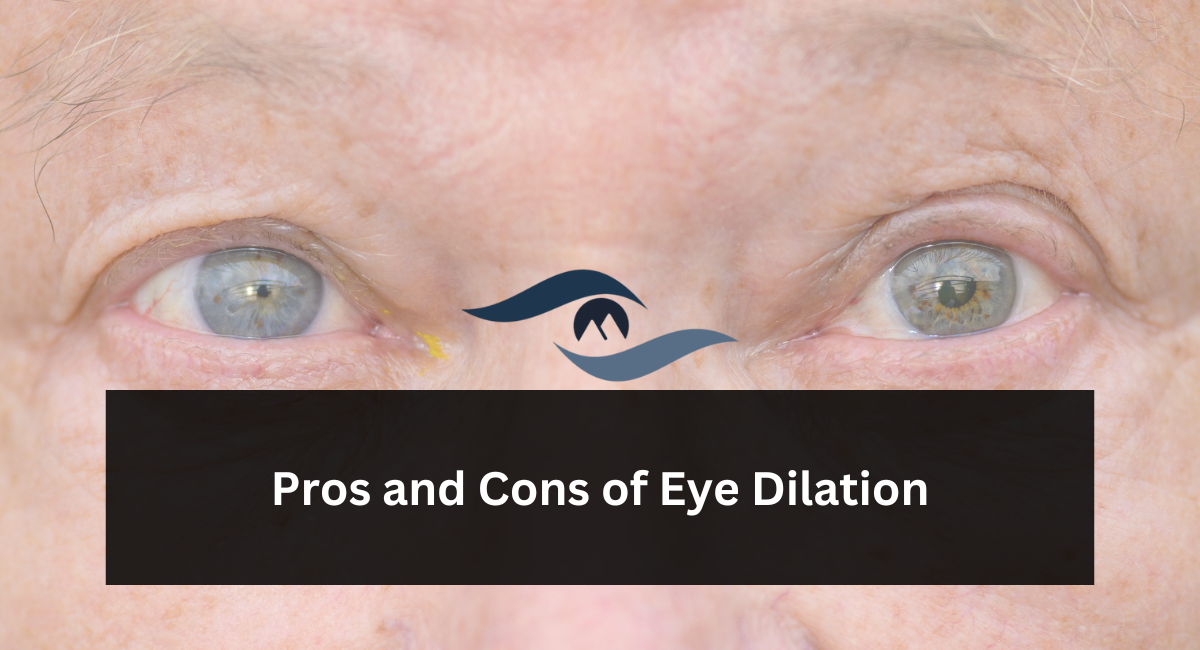Pupil dilation is a common practice carried out during eye examinations to evaluate eye well-being and identify possible problems.
Although it has many benefits, it also has some drawbacks. In this blog post, we will explore the advantages and disadvantages of eye dilation in depth, giving you the knowledge to make well-informed choices regarding your eye health.
Advantages of Eye Dilation:
Full Examination:
Eye dilatation allows eye care professionals to perform a complete evaluation of the internal components of your eyes, making it easier to diagnose eye diseases and problems at an early stage.
By enlarging the pupils, the eye care specialist obtains a broader perspective of the retina, optic nerve, and blood vessels, which might not be completely visible during a regular eye examination.
Early Identification of Eye Conditions:
Through the process of eye dilatation, a comprehensive examination of the retina and optic nerve can reveal indications of eye conditions such diabetic retinopathy, glaucoma, and macular degeneration in their initial phases. Early identification is important for starting therapy promptly and preventing loss of vision.
Precise Measurement of Refractive Error:
Eye dilatation guarantees a precise assessment of refractive defects, enabling eye care professionals to calculate the exact prescription for corrective lenses to enhance your vision.
By enlarging the pupils, the eye care specialist can precisely measure the refractive errors and evaluate how light enters and focuses on the eyes.
Monitoring Eye Health:
Regular eye dilation enables continuous monitoring of changes in eye health and the progression of existing eye disorders, ensuring timely intervention and treatment.
Through monitoring alterations in the retina, optic nerve, and other components, eye care experts can modify treatment strategies as necessary to maintain vision and general eye health.
Improved Diagnostic Precision:
Enlarged pupils provide clearer views of the inner components of the eye, increasing the precision of diagnostic examinations and evaluations for a more thorough assessment.
Eye dilatation enables eye care practitioners to detect subtle irregularities or indications of eye illness that may not be seen during a regular eye examination.
Best Treatment Planning:
Early identification and comprehensive assessment made possible by eye dilatation support effective treatment planning, resulting in improved outcomes for different eye disorders.
Through the early detection of eye illnesses, eye care specialists can create customized treatment plans that are specific to each patient’s requirements. These plans may involve drugs, surgery, or other necessary actions.
Preventing Vision Loss:
Through the early detection of eye disorders, eye dilatation aids in preventing vision loss and maintaining general eye health, leading to better long-term visual results.
Prompt action and medical care can delay the advancement of eye conditions and reduce the chance of long-term visual problems, enabling individuals to preserve their autonomy and quality of life.
Disadvantages of Eye Dilation:
Let us discuss disadvantages of eye dilation
Temporary Changes in Vision:
After having their eyes dilated, people may have temporary changes in their vision, such as blurry vision and sensitivity to light, which might impact their everyday activities.
The widening of the pupils can lead to myopia, which can make it challenging to see items nearby, and heightened sensitivity to light can cause discomfort in brightly illuminated surroundings.
Discomfort and Irritation:
The eye drops used to dilate the eyes may produce momentary discomfort or irritation, such as a little stinging or burning feeling, resulting in mild discomfort throughout the process.
Certain people could have weeping or redness of the eyes, which can be annoying but usually goes away by itself within a brief time.
Heightened Light Sensitivity:
Enlarged pupils are more responsive to light, so it is necessary to use sunglasses or protective eyewear to minimize discomfort when in strong light.
Following eye dilatation, individuals may experience discomfort or agony when exposed to strong lights or sunlight, necessitating temporary modifications to their normal routines.
Disruption of Everyday Tasks:
Eye dilatation can interrupt everyday tasks like driving or reading, as momentary alterations in vision may impact depth perception and close-up vision.
Individuals might have to avoid driving or using heavy machinery until their eyesight returns to its usual state, and reading or using electronic devices could be difficult because of blurry vision or trouble focusing.
Extended Recovery Time:
Although the majority of people recover from eye dilatation within a few hours, a minority may have a longer recovery period, with symptoms lasting for a lengthy time.
Elements like the kind and strength of eye drops used to dilate the eyes, personal sensitivity, and underlying eye problems can affect how long it takes to recover.
Risk of Unintentional Harm:
Changes in the way objects are perceived and understood due to eye dilatation might heighten the risk of unintentional harm, particularly while engaging in activities that demand accurate vision.
Patients can be more likely to trip, fall, or collide with objects because their perception of depth and distance has changed.
Possible Allergic responses:
In few instances, people may have allergic responses to the eye drops that make the pupils larger, requiring immediate medical intervention to properly control symptoms. Signs of an allergic reaction may involve redness, itching, swelling, or irritation of the eyes, which can cause discomfort and need treatment to cure.
Conclusion
Eye dilation has important advantages for evaluating eye health and identifying any problems, but it also has disadvantages like momentary vision alterations and pain.
In the end, it is important to discuss with your eye care specialist whether or not to have your eyes dilated, taking into account the possible advantages and disadvantages.
By comprehending the advantages and disadvantages of eye dilation, you can take proactive measures to uphold excellent eye health and vision.
